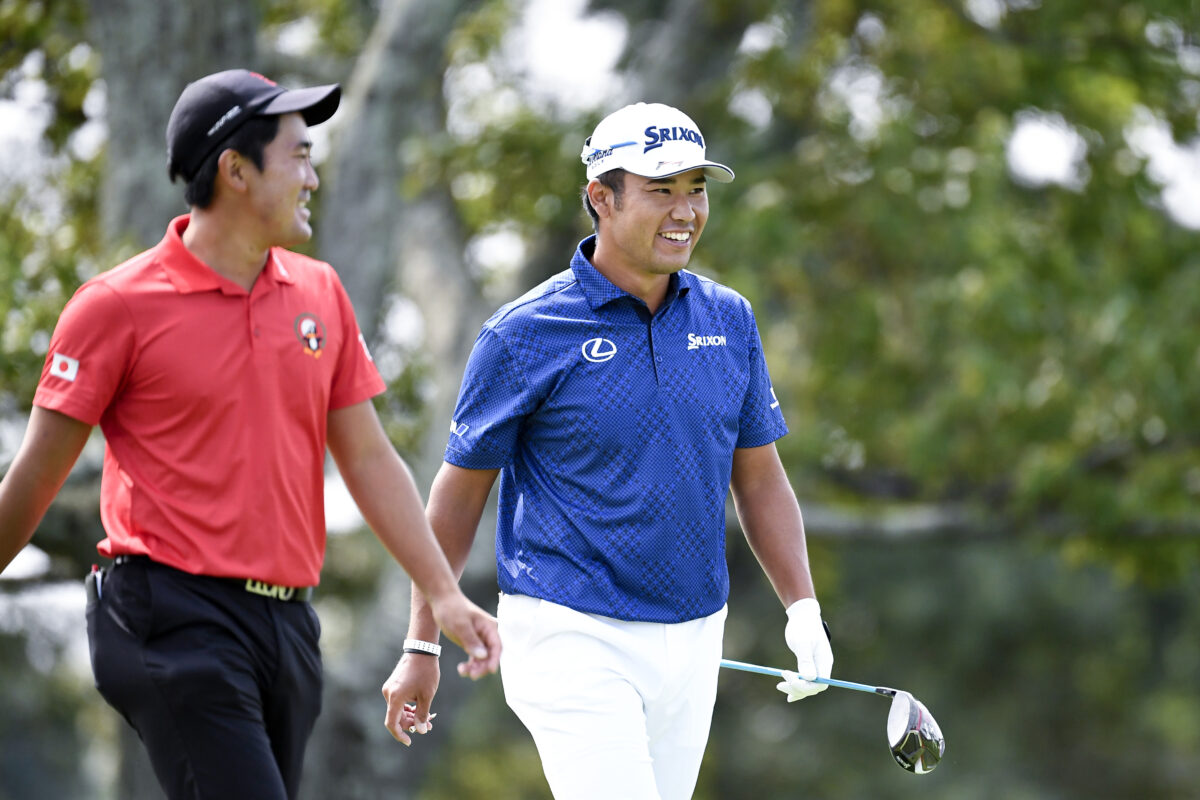As the first Japanese winner of a men’s major, Hideki Matsuyama’s victory at the Masters in April is expected to making a lasting impact in golf crazed Japan. But the reverberations from his rise to international golfing star can already be felt in two of the country’s most promising talents.
Keita Nakajima, the current No. 1-ranked amateur in the world and winner of the 2021 Mark McCormack Medal, and Takumi Kanaya, a former World No. 1 amateur who competes mainly on the Japan Golf Tour (JGTO) and finished the year at No. 49 in the Official World Golf Ranking, are both in the field this week at the PGA Tour’s Sony Open in Hawaii just as they will be in April at the Masters. Neither pro needed much prodding to heap praise on Matsuyama, who enters the week ranked No. 19 in the world and won the Zozo Championship in November.
“First and foremost, his playing self is second-to-none, and not only me but a lot of the Japanese players have been inspired to play well on U.S. soil,” said Kanaya.
Nakajima added of Matsuyama, “He’s a superstar in Japan. I want to catch up to Mr. Hideki and Mr. Takumi, as well.”
The 21-year-old golfer is off to a good start. He canned a 25-foot birdie putt on the second playoff hole to defeat Taicho Kho and win the Asia-Pacific Amateur and book his ticket to the Masters.

Nakajima became the third Japanese winner of the Asia-Pacific Amateur following in the footsteps of Matsuyama (2010-11) and Kanaya (2018). In September, Nakajima won a professional event, the Panasonic Open on the JGTO, and he competed in the PGA Tour’s Zozo Championship this fall, including playing a practice round with reigning British Open champion Collin Morikawa.
“Keita was awesome. Striped the ball, that’s one of the biggest things I saw. Everything sounded amazing. He was hitting it really straight. You don’t get to be the No. 1 player in the world for the amateur rankings unless you’re playing pretty well and you’re a good player, but I could see why. Sometimes you see players and you kind of guess how they got there, but I could see definitely why and how he got there,” Morikawa said in Japan. “He’s someone that is going to have a great future ahead of him. He’s got a lot to look forward to, but hopefully he can just enjoy the moment, enjoy where he’s at. That’s what I did.”
Nakajima expects to do just that. When asked to name his goals for the Masters, he simply said, “Enjoy the moment.”

A year ago, Kanaya, 23, won the McCormack Medal after a 55-week reign as the top-ranked amateur, and he has wasted little time making his mark professionally in Japan. He ended the year ranked No. 49 in the world, which was just good enough to earn an invite to the Masters (top 50 at the end of 2021 automatically qualified). One week after Matsuyama won the Masters, Kanaya defeated Nakajima by one stroke to win the JGTO’s Token Homemate Cup. Kanaya, who stayed up late to see the conclusion of the Masters, doesn’t think his triumph so shortly after Matsuyama made history was mere coincidence.
“I was simply watching the telecast and cheering him on in hotel prior to the tournament that I was playing in, and I was very inspired by his win,” Kanaya said.
In his previous Masters appearance in 2019, Kanaya finished T-58, but he said this time will be different.
“When I was there playing as an amateur, I was simply there for the experience,” he said. “But this year, playing as a professional, the Masters will be a key event for me to earn the card for PGA Tour or European Tour.”
Kanaya is set to play DP Tour events in Abu Dhabi and Dubai and hopes to receive a sponsor invite to the Arnold Palmer Invitational. His world ranking, which dropped to No. 51, will dictate if he gets to compete in the Players Championship and WGC Dell Match Play as well as potentially other sponsor invites.
Nakajima plans to remain an amateur after the Masters and compete in the World Amateur Team Championship later this summer in France, but he could be the next Japanese budding star to make a name for himself in the U.S. The fan of the Los Angeles Angels was asked what’s the biggest difference in being a superstar between Matsuyama and Shohei Otani, baseball’s latest sensation.
“I think nothing,” Nakajima said. “Same.”
[mm-video type=playlist id=01es6rjnsp3c84zkm6 player_id=01evcfxp4q8949fs1e image=https://golfweek.usatoday.com/wp-content/plugins/mm-video/images/playlist-icon.png]
